Exposures and Latent Disease Risk: Session II - Identifying Hallmarks and Key Characteristics
Sponsored by: NIEHS Superfund Research Program
The NIEHS Superfund Research Program (SRP) is hosting a Risk e-Learning webinar series focused on understanding the health effects of exposures when there is a lag between exposure and the onset of the disease. In the second session, presenters will discuss new methods to better understand potential disease risk by identifying key characteristics or hallmarks of chemicals and disease. This research may provide insight into identifying chemicals that may lead to disease earlier on in the disease progression and help explore how aging itself can be a risk factor for disease.
Martyn Smith, Ph.D., director of the University of California, Berkeley SRP Center, will describe the key characteristics approach to helping identify chemicals that cause cancer and other adverse outcomes. In evaluating whether a chemical can cause cancer or another adverse outcome, three lines of evidence are typically considered: epidemiology, animal bioassays, and mechanistic evidence. The key characteristics (KC) form the basis of a uniform approach for searching, organizing, and evaluating mechanistic evidence to support hazard identification without the need for a deductive hypothesis. KCs are the established properties of the chemicals and have been developed for carcinogens, endocrine disruptors, reproductive and neuro-toxicants, and are becoming increasingly used by authoritative bodies and regulatory agencies.
Michelle La Merrill, Ph.D., associate professor at the University of California, Davis, will focus on using the key characteristics of endocrine disruptors to organize mechanistic support of the developmental basis of endocrine disruption. Endocrine-disrupting chemicals (EDCs) are exogenous chemicals that interfere with hormone action, thereby increasing health risks, such as for cancer, reproductive impairment, cognitive deficits, and obesity. Inspired by work to improve hazard identification of carcinogens using KCs, they have developed 10 KCs of EDCs based on our knowledge of hormone actions and EDC effects. This presentation will reveal how these 10 KCs can be used to identify, organize and utilize mechanistic data when evaluating chemicals as EDCs that contribute to developmental vulnerability to adult disease, and use DDT and bisphenol A as examples to illustrate this approach.
Ron Kohanski, Ph.D., deputy director of the Division of Aging Biology at the National Institute on Aging, will focus on aging as a risk factor for disease. Geroscience is a recently evolved field of research on the intersection between the biology of aging and the biology of disease. The geroscience hypothesis states that "slowing the rate of aging will delay the onset and decrease the severity of chronic diseases and comorbidities that primarily impact older people." This does not mean that old age per se is a risk factor, any more than claiming that childhood is a risk factor for diseases that primarily afflict children. However, in the latter case the underlying causes may be the stage of development does not yet confer resilience against pathogens, for example. In the former case, the underlying causes may be loss of that resilience (acquired over a lifetime) from the failure of underlying molecular networks that maintain the body and adapt to environmental changes. This talk will present a viewpoint that aging can be treated as a risk factor, attempting to show that both the magnitude and duration of changes that are the process of aging can be altered in ways that are either beneficial or detrimental to health.
Accessibility, Recording, and Content Disclaimer
Rehabilitation Act Notice for Reasonable Accommodation
It is EPA's policy to make reasonable accommodation to persons with disabilities wishing to participate in the agency's programs and activities, pursuant to the Rehabilitation Act of 1973, 29 U.S.C. 791. Any request for accommodation should be made to at or , preferably one week or more in advance of the webinar, so that EPA will have sufficient time to process the request. EPA would welcome specific recommendations from requestors specifying the nature or type of accommodation needed. Please note that CLU-IN provides both alternate phone call-in options and closed captioning for all webinars, and requests for these specific accommodations are not necessary.
Webinar Recording
By participating in this CLU-IN webinar, you automatically agree to authorize recording of audio and visual content presented during this live event and consent to subsequent use of this recording in the public domain by the U.S. Environmental Protection Agency. This recording may include questions, comments and poll responses provided by you during the live event in addition to your name, voice, image or likeness. This recording will be made available after the conclusion of the live event as part of the CLU-IN webinar archives, and will remain available indefinitely. If you do not wish to consent to the recording, please do not join the live event, and contact Jean Balent at 202-566-0832 or balent.jean@epa.gov to discuss your concerns.
Content Disclaimer
This webinar is intended solely to provide information to the public. The views and opinions expressed as part of this webinar do not necessarily state or reflect those of the U.S. Environmental Protection Agency. It is not intended, nor can it be relied upon, to create any rights enforceable by any party in litigation with the United States, or to endorse the use of products or services provided by specific vendors. With respect to this webinar, neither the United States Government nor any of their employees, makes any warranty, express or implied, including the warranties of merchantability and fitness for a particular purpose, or assumes any legal liability or responsibility for the accuracy, completeness, or usefulness of any information, apparatus, product, or process disclosed, or represents that its use would not infringe privately owned rights.
Presenters:
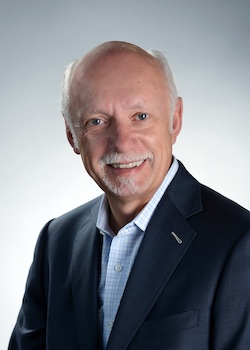 Martyn Smith, Ph.D., University of California, Berkeley (martynts@berkeley.edu)
Martyn Smith, Ph.D., University of California, Berkeley (martynts@berkeley.edu)
Martyn Smith is a Professor of the Graduate School in Environmental Health Sciences and the Kaiser Chair of Cancer Epidemiology in the School of Public Health at Berkeley. Since 1987, he have served as Director and Principal Investigator of the UC Berkeley Superfund Research Program. His research is focused on examining the complex relationships between environmental exposures and disease risk and health effects, including cancer, diabetes and other chronic diseases. Dr. Smith have used a molecular epidemiology approach using state of the art biomarkers in well-designed epidemiological studies and human cell culture model systems. He advanced the concept of carcinogens and other toxic chemicals having intrinsic properties known as ‘key characteristics' which is now used as the approach to incorporate mechanistic data into hazard and risk assessment by IARC, US EPA, NTP and CalEPA. Most recently, he has begun to apply machine learning and other computational approaches to toxicological questions with colleagues in Chemistry and Biostatistics. Initially, Dr. Smith and team used molecular docking to study the interactions between environmental chemicals and the androgen receptor and have since examined the interactions of ~6,000 PFAS and other chemicals with multiple nuclear receptors and have developed machine learning approaches to predict these interactions and find potential endocrine disruptors.
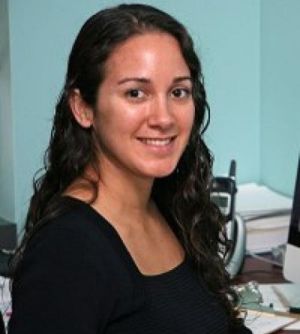 Michele La Merrill, Ph.D., University of California, Davis (mlamerrill@ucdavis.edu or 530-754-7254)
Michele La Merrill, Ph.D., University of California, Davis (mlamerrill@ucdavis.edu or 530-754-7254)
Michele La Merrill, Ph.D., is an associate professor in the department of environmental toxicology in the college of agricultural and environmental sciences at the University of California, Davis. The mission of La Merrill laboratory is to understand the mechanistic basis of environmental causes of endocrine diseases: obesity, diabetes, hypertension, and breast cancer. Endocrine diseases are increasingly common and contribute to the leading causes of death worldwide, which are cardiovascular disease and cancer. They conduct cellular, whole animal and human epidemiological studies to integrate human observations with mechanistic investigations.
La Merrill earned her Ph.D. in Toxicology at the University of North Carolina at Chapel Hill through the mentorship of David Threadgill, Ph.D., and Linda Birnbaum, Ph.D., on the interaction of prenatal dioxin exposure and high fat diet on mammary cancer and metabolic syndrome risk. La Merrill earned her M.P.H. in epidemiology during her postdoctoral fellowship at Mount Sinai School of Medicine in New York City. There she conducted research on the influence of perinatal exposures and epigenetics on metabolic abnormalities in humans and rodents. She began research as an assistant professor in environmental toxicology at UC Davis in January 2013. She is a member of the Pharmacology & Toxicology Graduate Group, the Integrative Genetics and Genomics Graduate Group, Epidemiology Graduate Group, the UC Davis Genome Center and the UC Davis Comprehensive Cancer Center. She is also an adjunct professor in the Division of Environmental Genomics and Systems Biology at the Lawrence Berkeley National Lab.
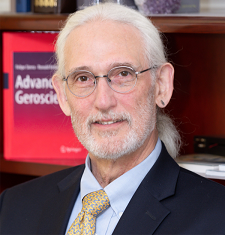 Ron Kohanski, Ph.D., NIH National Institute on Aging (kohanskir@mail.nih.gov or 301-496-6402)
Ron Kohanski, Ph.D., NIH National Institute on Aging (kohanskir@mail.nih.gov or 301-496-6402)
Ron Kohanski, Ph.D., is the deputy director of the Division of Aging Biology at the National Institute on Aging, NIH. Trained as a biochemist, he obtained a Ph.D. in biochemistry from the University of Chicago in 1981. After a postdoctoral fellowship with M. Daniel Lane at the Johns Hopkins University School of Medicine, he held a faculty position at the Mount Sinai School of Medicine for 17 years before returning as a faculty member at Johns Hopkins. His fields of research included enzymology and developmental biology of the insulin receptor. Kohanski joined the Division of Aging Biology, NIA in 2005 as a Program Officer, and became Division Deputy Director in 2007. He has promoted aging research in the specific areas of stem cell biology and cardiovascular biology. More broadly, he promotes research efforts to expand studies beyond laboratory animals to address the basic biology of aging explicitly in human populations and non-laboratory animals (domestic and wild populations).
Kohanski is also a co-founder and co-leader of the trans-NIH Geroscience Interest Group (GSIG). The group spans the entire NIH and is built on the fact that aging is the major risk factor for most chronic age-related diseases. In keeping with this program, he has encouraged researchers to consider age as an essential parameter of research using animal models of chronic diseases. More broadly, he promotes research into the basic biology of aging that could explain why aging is itself the major risk factor of chronic diseases.
Moderators:
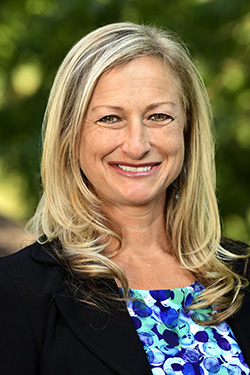 Heather F. Henry, Ph.D., Program Administrator, NIEHS Superfund Research Program (heather.henry@nih.gov)
Heather F. Henry, Ph.D., Program Administrator, NIEHS Superfund Research Program (heather.henry@nih.gov)
Heather Henry, Ph.D., is a health science administrator for the NIEHS where she oversees Superfund Research Program (SRP) grants that spans human health toxicology, risk assessment, detection technologies and remediation approaches. She provides guidance to potential applicants for SRP’s Multiproject Center Grants (P42s), Individual Research Grants (R01s), Small
Business / Technology Transfer Grants (R41-44; SBIR/STTR), and Conference Grants (R13). Heather studied plant-based environmental remediation
(phytoremediation) and ecological restoration as part of her doctoral work at the University of Cincinnati and as a Fulbright Postdoctoral Fellow at the University of Melbourne and University of Adelaide in Australia. She has been with NIEHS since 2006.
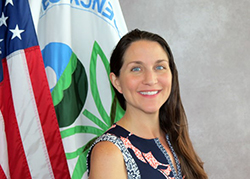 Jean Balent, U.S. EPA Technology Innovation and Field Services Division (balent.jean@epa.gov or 202-566-0832)
Jean Balent, U.S. EPA Technology Innovation and Field Services Division (balent.jean@epa.gov or 202-566-0832)
Ms Balent is on the staff of the EPA's Technology Innovation and Field Services Division where she has worked to collect and disseminate hazardous waste remediation and characterization information since 2003. Ms Balent manages the Clean Up Information Network website and actively supports online communication and collaboration resources available to EPA. She formerly worked with the US Army Corps of Engineers Environmental Engineering Division in the Buffalo District. Ms Balent was also a member of the SUNY-Buffalo Groundwater Research Group where she constructed and tested large scale models of groundwater flow. Ms Balent has also conducted research relating to the Great Lakes, environmental remediation, and brownfields re-development. She holds a Bachelor's degree in environmental engineering from SUNY-Buffalo and a Master's degree in Information Technology from AIU.
Webinar Slides and References:
Webinar Slides and References:
-
 Slide Presentation for Martyn Smith, Ph.D., UCAL Berkeley (4.66MB/PDF)
Slide Presentation for Martyn Smith, Ph.D., UCAL Berkeley (4.66MB/PDF)
-
 Slide Presentation for Michele La Merril, Ph.D., UCAL Davis (3.53MB/PDF)
Slide Presentation for Michele La Merril, Ph.D., UCAL Davis (3.53MB/PDF)
-
 Slide Presentation for Ronald Kohanski, Ph.D., NIH (1.58MB/PDF)
Slide Presentation for Ronald Kohanski, Ph.D., NIH (1.58MB/PDF)
Additional Resources:
- Key Characteristics of Carcinogens as a Basis for Organizing Data on Mechanisms of Carcinogenesis
- Key Characteristics Approach to Carcinogenic Hazard Identification
- The Key Characteristics of Carcinogens: Relationship to the Hallmarks of Cancer, Relevant Biomarkers, and Assays to Measure Them
- Consensus on the Key Characteristics of Endocrine-Disrupting Chemicals as a Basis for Hazard Identification
- Association Between Exposure to p,p'-DDT and Its Metabolite p,p'-DDE With Obesity: Integrated Systematic Review and Meta-Analysis
- Association Between Maternal Exposure to the Pesticide Dichlorodiphenyltrichloroethane (DDT) and Risk of Obesity in Middle Age
- National Institute on Aging
- Personal Aging Markers and Ageotypes Revealed by Deep Longitudinal Profiling
- Environmental Influences on Aging: Effects of Extreme Weather and Disaster Events on Aging Processes
Thank you for participating in our webinar. We would like to receive any feedback you might have that would make this service more valuable.
Help & FAQs
Adobe Connect Resources
This seminar will be delivered through Adobe® Connect™ with streaming audio delivered through your computer speakers or headphones. We strongly encourage you to test your computer or mobile app prior to attending this seminar using the links below. Technical support on the day of the seminar will be very limited and subject to significant delays.
- Adobe® Connect™ Meeting Connection Diagnostic & Troubleshooting Tips
- Adobe® Connect™ Mobile Apps
- Adobe® Connect™ Visual Quick Start Guide (754KB/2pp/PDF)
Rehabilitation Act Notice for Reasonable Accommodation
It is EPA's policy to make reasonable accommodation to persons with disabilities wishing to participate in the agency's programs and activities, pursuant to the Rehabilitation Act of 1973, 29 U.S.C. 791. Any request for accommodation should be made to at or , preferably one week or more in advance of the seminar, so that EPA will have sufficient time to process the request. EPA would welcome specific recommendations from requestors specifying the nature or type of accommodation needed, such as closed captioning.
with any additional questions
If you have a suggested topic or idea for a future CLU-IN internet seminar, please contact:
Technology Integration and Information Branch
PH: 202-566-0832 | Email: balent.jean@epa.gov
Technology Integration and Information Branch
PH: 202-566-0875 | Email: adam.michael@epa.gov





